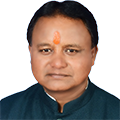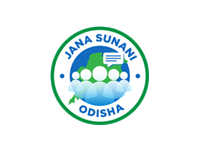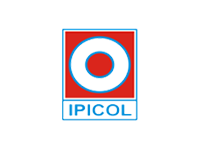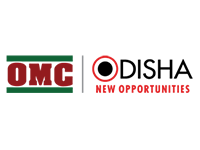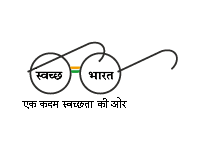- Sterilisation programme
- IUD Programme
- Contraceptive programme
- Urban Family Welfare Programme4
- Urban revamping Scheme
- Green Card Scheme
- Rural FW Center
- Sub-Centre
- Medical Termination of Pregnancy
- Reproductive and Child Health Programme
Scheme wise activities
Different Schemes under FW Programme being routed through State Govt. Budget
Central- Plan
STATE FAMILY WELFARE BUREAU
The State Family Welfare Bureau is functioning at State Head quarter as an administrative Unit for implementation of Family Welfare programme in all districts of the State.
DISTRICT F.W. BUREAU (NON-TRIBAL & TRIBAL)
The District Family Welfare Bureau is one of the key branches functioning in the district health Office under Chief District Medical Officer for implementation of the FW Programme in all districts of the State.
TRAINING OF NURSES, MIDWIVES & LHV & FUNCTIOING OF SUB-CENTRES
Sub Centres are the base level health institution to implement multiple health activities at the rural and remote areas of the State. Health Worker (Female) and Lady Health Visitors are the accountable Govt. personnel to implement different vertical health programmes. For their triaging, orientation and time to time improvement, the scheme efficacy in all districts of the State.
REVAMPING OF URBAN SLUM
In order to provide regular health services, Immunization and other FW activities at Urban slums, revamping urban slum scheme is included in the 3 major cities of the state. i.e. Bhubaneswar, Cuttack & Rourkela (Sundargarh).
STATE PLAN
- IMR Mission
Due to high IMR in the State, the State Govt. implemented the Infant Mortality Reduction Mission in the State from 15th August 2001 which is functioning effectively in Orissa. The IMR was 91 per 1000 live births in 2001 which has come down to 75 as per 2005 SRS. As per the programme of the Mission, referral transport facility was being provided to the pregnant mother for promoting institutional delivery. But after implementation of JSY programme, the mission is providing the mobility support for treatment of puerperal mother and sick infants. This is exclusively a state budgetary programme all districts of the State.
- Navajyoti Scheme
The Navajyoti scheme was launched in December 2005 in 14 districts having high IMR. In these selected districts DAIS are being trained to provided safe delivery and home based new born care in home delivery.
- Maternal and Perinatal Death Inquiry - (MaPeDI)
This is a contribution towards reduction of MMR and improvement of maternal health status in Orissa. It also contributes neonatal and perinatal mortality for reduction of child hood deaths.
Modalities of implementation - Death reported by front line workers, supervisors visit home for notification, investigating team collects VA data from homes-institutions, Data analysis and sharing at Community, Block, District level.
Objectives: -Strengthen the implementation of NRHM, JSY & Navojyoti, Identification of bottle necks at various levels for improving delivery care service, facility strengthening for better complication management, empower house hold level action, promote community participation.
- CENTRALLY SPONSORED PLAN
- ORIENTATION TRAINING OF MEDICAL & PARA MEDICAL STAFF
Orientation of Basic Health Training programme have been going on RHC, Jagatsinghpur for conducting training of Health Worker (Male) including orientation training programme of Medical Officers and other health functionaries in the State. This scheme is the Centrally Sponsored Plan & 50% Central Assistance is being funded by Govt. of India as Grants-in-Aid.
- NRHM (National Rural Health Mission)
NRHM was launched by GOI on 12th April 2005. In Orissa the programme was launched on 17th June 2005. NRHM is one of the biggest ever integrated health initiatives in the Health Sector. NRHM is not a project, but an over arching umbrella integrating all on going vertical health programmes and addressing issues related to the determinants of health, like sanitation, Nutrition , safe drinking water.
Goal of the Mission
To improve availability of and access to quality health care by people especially for those residing in rural areas, the poor, women and children.
Components under NRHM
- New Initiatives: under Initiative under NRHM, the components are (a) ASHA- (Accredited Social Health Activist), (b) Untied Fund at Sub centre level, (c) Upgrading Community Health Centres (CHC) as per Indian Public Health Standard (IPHS), (d) Rogi Kalyana Samiti (RKS), (e) Mobile Medical Unit (MMU), (f) AYUSH, (g) Intersectoral Convergenceetc.
- RCH-II – Reproductive & Child Health Programme-II
RCH-II is a continuation of RCH-I programme which is continuing from the year 1997-2005.
Objective of the programme is to improve the Reproductive health of men and women and the health of children with the focus to reduce maternal and child mortality and morbidity giving emphasis on rural health care.
Goal of the programme is to bring down the IMR to 50/1000 live births by 2010 and MMR to 250/100000 live births by 2010.
Activities - Health of pregnant mother and infant are interrelated. So among the important activities are:
- Maternal Health
- Antenatal Care
- Early Registration of Antenatal cases
- Fixed Health and Nutrition day
- Routine Antenatal check-up
- Malaria Chemoprophylaxis
- Identification of risk factors and timely referral
- Safe Abortion Services
- Treatment of Sexual and reproductive Tract Infection
- Intranatal Care:-
- Care of Pregnant mother during delivery
- Janani Suraskhya Yojana (JSY):- To promote institutional delivery, pregnant mothers are provided with cash assistance of Rs. 1,400/- for institutional delivery. JSY integrates the cash assistance with antenatal care during pregnancy, institutional care during delivery and immediate post partum period. It involves a co-ordinated care by field workers like ANM, AWW and ASHA.
- The objective of JSY is to reduce over all maternal mortality ratio, infant mortality rate and to increase institutional delivery in BPL families.
- Post natal care
- Antenatal Care
As 60% of infant death takes place during 1st month of life, care of mother during and immediately after delivery is vital for safety of mother and as well as infants. The Lady Health Workers, ASHA, TBAs are oriented to visit the mother to check up the health of mother and baby, breast feeding of infant immunization. Birth spacing and Family Planning measures, treatment and Reproductive Tract Infections etc.
In case some risk factors are identified the mother/infant is referred to public health institution for treatment. There is provision of Rs. 150/- per case as cash assistance for referral of sick neonate under RCH programme.
- New born and Child Health
- Integrated Management of New born and child Health (IMNCI)
Bringing down Infant and child mortality rate and improving child Health and Survival has been an important goal. Prevention of death due to Acute Respiratory Infective (ARI), were implemented as vertical health programmes.
These programmes were integrated in 1992 under Child Survival and Safe Motherhood Programme (CSSM) which are being united as a part of Reproductive and Child Health programme implemented since 1997.
Children presenting with any illness often suffer from more than one disease. For instance a child with diarrhoea may also have signs of Malnutrition, and may not have received immunisation as per schedule.
Activities – Under IMNCI package:-
- Care of newborn and Young Infants (Under 2 months).
Three home visits are to be provided by ANM, AWW, ASHA to every newborn on day 1,3 and 7. For LBW babies 3 more visits are undertaken.
- Care of Infants and children (2 months – 5 yrs)
-
- Management of diarrhoea, respiratory track infection, eye & ear infection, malaria, malnutrition, anaemia and other diseases.
- Counselling for breast feeding and supplementary feeding.
- Immunization
- Recognition of risk conditions, management / referrals.
- Adolescent Reproductive Health
10 to 19 yrs of life is known as adolescent period. During this period human being undergo multiple physical as well as mental changes which have lot of bearings on health. So it is important to address the adolescents and influence their health seeking behaviours and break the inter generational gap.
There are a number of problems in the adolescent period. Specially females such as low nutrition, low health status, early marriage, early pregnancy, low contraceptive prevalence. Pregnancy among adolescents bears excess risk for maternal and infant mortality.
Reproductive Tract Infections and HIV / AIDS are the emerging problems of this group.
In this context to address the above problems of Adolescent population specifically to reduce MMR, IMR and Total Fertility Rate (TFR) the Adolescent Reproductive Health is included in RCH – II. Objectives – To increase utilization of Reproductive Health Services by adolescent boys and girls in the state and to develop awareness regarding equity issues in acceptance of available services. Strategies
BCC
- On delayed marriage
- Care during pregnancy
- Prevention and treatment of STI
- Provisos of condoms, Contraceptive Pills, Emergency contraceptive Pills
- Education on Nutrition
- Safe abortion services
- Educate community Self Help Group, PRI members on gender and other RCH issues.
- To provide easy access to health facilities.
Activities - Training of Service Providers, Medical Officers, other health personnel, NGOS.
- Advocacy at all levels.
- Tribal Health
Health problem of Tribal community needs special attention as their unique distinctive culture, habitat isolation and remoteness from the ongoing developmental processes of the country has alienated them from the mainstream of health system.
22.3 % of state’s populations belong to Tribal population, which is affected by illiteracy, poverty, superstition, malnutrition, absence of safe drinking water and many other factors.
Activities- Formation of Village Health Committee, Engagement of ASHA (Accredited Social Health Activists),, Traditional Birth Attendant to maintain link between health facility and community, Appointment of 3 Health workers in sub centre having more than 5000 population, Health camps in every Tribal village with population of 300, Provision of Mobile Health Units, Provision of Emergency Obstetric Care at block level and Comprehensive Obstetric Care at First Referral Unit level by developing infrastructure and placement of adequate staff, Monthly Swasthya Melas to be conducted by NGOS in every village to address reproductive child health issue, Training and skill development of service providers, Adequate IEC, BCC to empower the tribal women regarding safe reproductive practices.
- Family Planning (F.P.)
Increased no. of child births and lack of spacing between child births have many hazardous effects on the health and nutrition status of mother as well as child. GOI advocates for acceptance of different temporary and permanent FP measures which are easily accepted by educated population. Like, Sterilisation – is the terminal method of family planning. After 2-3 child births one of the parents opt for surgical method of sterilization. Female sterilization is by the main popular method in the state. This service is provided by M.Os in each Govt. hospitals, Intra uterine Device (IUD) Copper T is inserted inside the uterus to prevent pregnancy. The copper T is provided by GOI. The service is provided in sub center level and in all hospital, Use of Condom :- Condom is used as a contraceptive device as well as for protection from HIV / AIDS. Condom vender machines are installed in hospitals and social marketing of condom is promoted, Oral Pills – Use of oral pills by women for the purpose of preventing pregnancy. The tablets are provided by GOI and supplied to people at sub centre and all health facilities in free of cost all districts of the State.
- COMPENSATION
With a view to encourage people to accept sterilization operation voluntarily, compensation for loss of wages is being paid to the beneficiaries as per pattern fixed by the Govt. of India from time to time.
GOI has started an Insurances scheme to cover the death, complication and failure cases of sterilisation as well as indemnity cover of surgeons. An agreement has been signed by GOI and Oriental Insurance Company and the scheme has been implemented from November 2005 in all districts of the State. Green Card Scheme- The state Govt. have introduced Green Card Scheme with effect from 1983 to popularise permanent method of F.P. for two children or less. Parents and children under Green Card Scheme are eligible for certain benefits all districts of the State.
- IMMUNISATION
Immunisation is one of the most well known and effective methods of preventing child hood diseases. Universal Immunisations Programme (UIP) is established in India in 1985. Since then morbidity and mortality due to vaccine preventable diseases have declined over the years all districts of the State. Objectives – To prevent infant from 6 killer diseases like Diphtheria, T.B. Polio, Whooping Cough, Tetanus, and Measles. Activities: -
- Routine Immunisation schedule – This is a National immunisations schedule which is followed by all the states.
- Special Immunisation Week - To immunise infants, pregnant mothers and children in unreached areas, in areas where immunisation services are not given for 2 shifts and dropout population, immunisation services are undertaken in a campaign method twice in a year.
- Intensified Pulse Polio Immunisation - GOI Launched the Pulse Polio Immunisation programme in an effect to eradicate polio from the country and to free children from the danger of this dreaded disease.
- Supply of sufficient Vaccine – GOI provide all types of vaccine as per requirement by the state. The vaccine are stored, transported and utilised under cold chain system as per GOI norm.
- Use of Immunisation Card and Counter Foil - One immunisation card is used for each vaccinated mother /child. The name of the vaccine given, the date of vaccination is mentioned in the card. A counter foil of the card is maintained at the sub centre by the Health Worker / Vaccinator to follow up the child in case the original card is not produced by the child’s parent.
- Maintenance of Cold Chain System - To preserve the potency of the vaccine the vaccine are transported and stored under cold chain system in specific range of temperature.
- Use of Auto-Disposable Syringes - For injectable vaccine such systems are supplied by GOI which is launched after syringe use. Such system prevents from misuse of any needles and syringes so that Adverse Effect of Immunisations are prevented.
- Training to HW (F) - The staff utilized in immunisation programme are given training on vaccine use, cold chain and injection safety from time to time before any special immunisation schedule.
- Adverse Effect of Immunisation- All health staffs are trained on detection and management of Adverse Effect on Immunisation.
- Survey of Vaccine Preventable Disease - Collecting information on vaccine presentable diseases is used as a guide for immunisation strategy.






